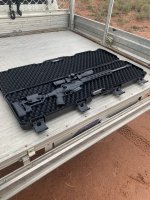The road up and the road down is one and the same. However not all roads are the same. If I was reloading for PRS I kept my process simply, I avoided adding additional steps in the process. provided I got my minimum acceptable accuracy.
However, in benchrest we are looking at smallest group possible. So, bearing this in mind, what would you say, differs reloading process in benchrest from PRS- focused reloading. If I am going to go the benchrest route, how should I reorganize/ rethink my reloading process?
However, in benchrest we are looking at smallest group possible. So, bearing this in mind, what would you say, differs reloading process in benchrest from PRS- focused reloading. If I am going to go the benchrest route, how should I reorganize/ rethink my reloading process?


